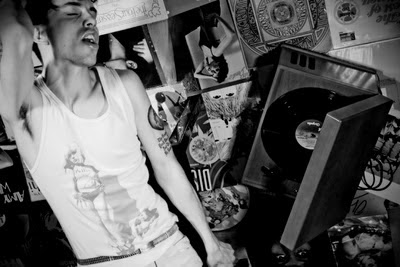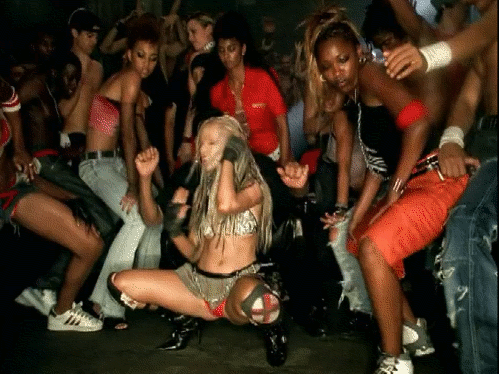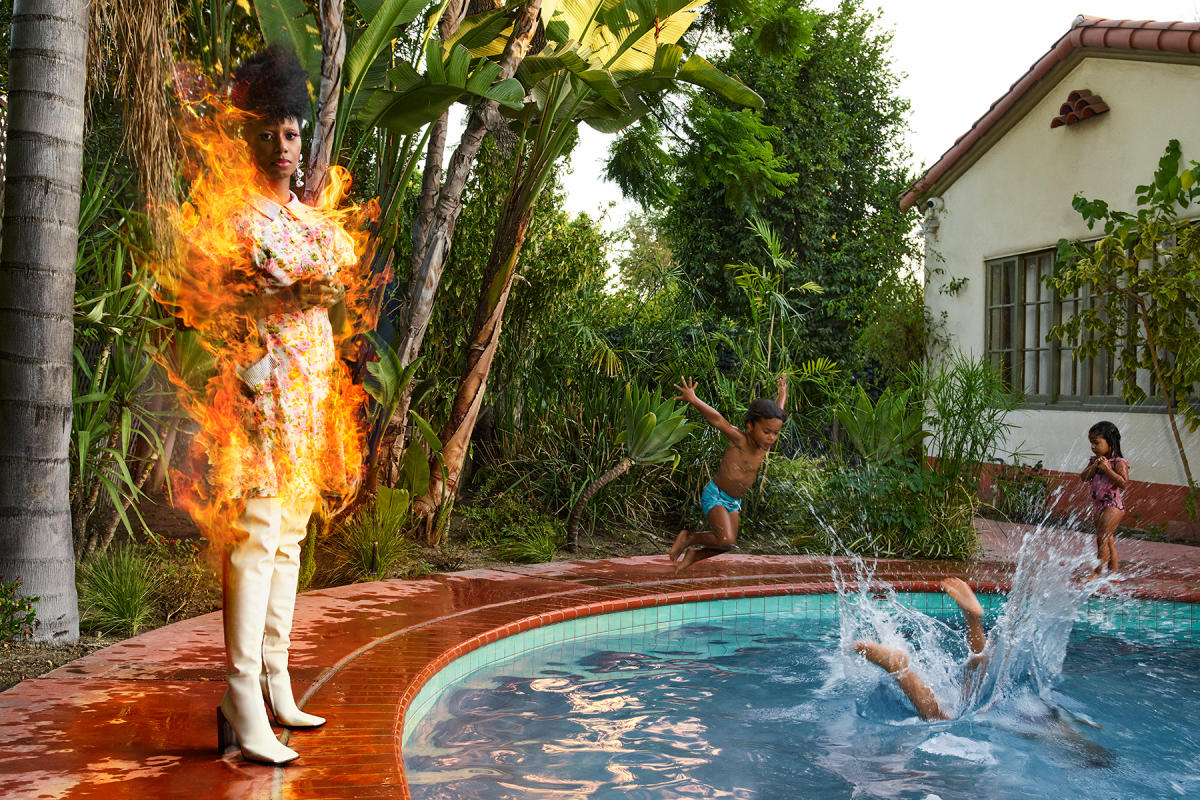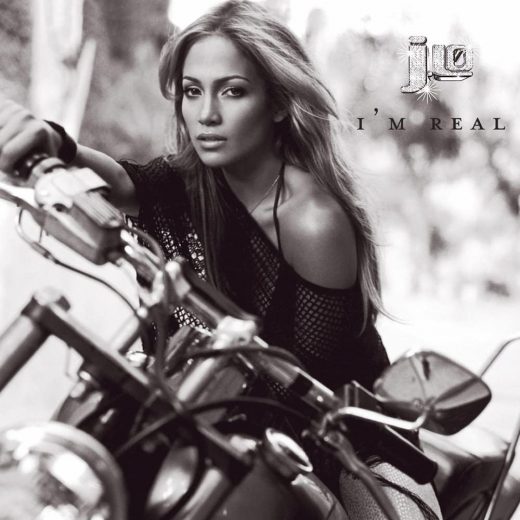According to one of our preferred sources:
Mary J. Blige has had so much drama in her life. If you didn’t know anything else about Mary, you still knew that. People knew Mary’s backstory, but if you didn’t, you could still hear the drama every time she opened her throat and howled. Mary J. Blige had a hard childhood, a hard adolescence, and a hard adulthood. Other R&B singers have made sideways statements about Mary J. Blige’s singing voice, which was never as clean or virtuosic as some. With Mary, though, the whole point was never whether she could sing notes perfectly. It was whether she could make you feel something. She could always make you feel something.
If you’ve ever seen Mary live, then you know the sheer power that she brings to every performance. One night in Madison Square Garden, I saw Mary break down in tears, or at least in a convincing simulation of tears, while singing “Your Child,” and it was almost more than I could stand. That fierce, unbridled emotion is the reason that people love Mary. At that same show, Mary didn’t even have to sing “I’m Goin’ Down.” She just had to stand there, bathing in adoration, while the whole room sang the song to her instead.
Mary J. Blige has a good handful of genuine crossover hits to her name, but she’s never been a singles artist. Instead, she’s focused her power on emotional catharsis, on making people feel things. She’s the kind of artist who isn’t necessarily going to convey that gale-force intensity in the context of a three-minute pop song that’s been built for airplay. But by living her life in public, broadcasting those huge feelings to huge audiences, Mary got people invested. “Family Affair” is the only Hot 100 chart-topper of Mary’s career, and it’s a full-on forget-your-troubles party song. But when it’s Mary J. Blige singing a forget-your-troubles party song, that song hits in a different way. Mary’s life story gives the song extra catharsis. When Mary sang about celebrating no more drama in her life, the world knew exactly what she’d been through, how she’d had to fight to get there.
So: The backstory. Mary Jane Blige was born in the Bronx, and she grew up first in Atlanta and then in a housing project in Yonkers, New York. (When Mary was born, George Harrison’s “My Sweet Lord” was the #1 single in America.) Mary’s traumas began early; a family friend molested her when she was five years old. Her father was a jazz musician and Vietnam veteran; he abused his wife and kids before leaving the family when Mary was young. Mary’s mother was a nurse with her own alcoholism problems. Mary sang in churches when she was a kid. As a teenager, she dropped out of school, and she got into drugs, alcohol, and random sex. Mary has discussed most of this, both in interviews and in song, but some details of her past remain mysterious. She’s never said, for instance, where she got the scar under her eye. It’s none of our business.
Even through all that darkness, though, Mary J. Blige always loved music. In 1988, a 17-year-old Mary, acting on the spur of the moment, sang Anita Baker’s “Caught Up In The Rapture” at a mall karaoke booth in White Plains, New York. (“Caught Up In The Rapture peaked at #37. Anita Baker’s highest-charting single, 1988’s “Giving You The Best That I Got,” peaked at #3. It’s a 4.) I wish Mary’s recording of “Caught Up In The Rapture” was out there in the world, but it’s not. The closest thing I can find is a video of Baker and Blige singing the song together in New York in 2011. The video is grainy, and the sound is dumpster-quality, but it’s still a wonderful thing to witness. The performance is great, but the real choke-up moment comes at the end, when Mary, holding Anita Baker’s hand, says that Baker’s song “saved my family.”
As fate would have it, Mary J. Blige did not have an Anita Baker-style recording career in front of her. Instead, her path took different turns. Mary’s mother’s boyfriend took a copy of that karaoke tape to a friend at Uptown Records, the label that ex-rapper Andre Harrell founded in 1986. Harrell heard the tape, and he signed Mary. A 19-year-old Mary started out as a backup singer for the Uptown star Father MC. You can hear Mary on Father MC’s biggest hit, 1990’s “I’ll Do 4 U,” and you can see her in the video. (“I’ll Do 4 U” peaked at #20.) At the same time, Andre Harrell entrusted Mary’s solo career to his young protege Sean “Puffy” Combs.
Puffy, who’s already been in this column a bunch of times, knew exactly how to present Mary J. Blige to the world. Puffy sold Mary as “the Queen Of Hip-Hop Soul,” and that title has stuck with her ever since. It didn’t mean that Mary rapped, though she’s dabbled over the years. It didn’t mean that she shared her microphone with rappers, either, though she’s also done a whole lot of that. It meant that a young Mary stood in stark opposition to smooth, glossy R&B stars like, ironically enough, Anita Baker. She was a new breed.
Acting as executive producer of Mary J. Blige’s 1992 debut What’s The 411?, Puffy had Mary singing over hard, immediate rap beats. He also got her to dress in baggy clothes and gold jewelry, hiding her eyes behind bangs and hats pulled low. Mary was a mysterious figure, but more than that, she was tough and guarded. That was the presentation. The voice was something else — a classically raw, full-throated soul-belter rasp. Mary emerged in the new jack swing era, but that’s the music that she mostly made. Instead, the roughness of her voice and the roughness of the beats complemented one another. You can hear a few echoes of new jack swing in Mary’s debut single “You Remind Me,” which has a great Greg Nice verse and which showed up on the soundtrack of the Tommy Davidson/Halle Berry comedy Strictly Business. “You Remind Me” was an immediate sensation. It topped the Billboard R&B chart, and it peaked at #29 on the Hot 100.
There wasn’t really any new jack swing in Mary J. Blige’s second single. On “Real Love,” Mary wailed about romantic desperation over the endlessly hard drums from Audio Two’s 1987 underground anthem “Top Billin’,” and she sounded like a revelation. This represented a whole new way that rap and R&B, two genres that had often stood in opposition to one another, could come together into something truly powerful. “Real Love” once again topped the R&B chart, and it also became a crossover smash, peaking at #7 on the Hot 100. (It’s a 10.) What’s The 411? eventually went triple platinum.
Mary J. Blige was a huge star right out of the gate, but that didn’t necessarily make life easier for her. In those early years, Mary struggled with drugs, alcohol, and depression. She also got into an abusive relationship with Jodeci’s K-Ci Hailey, a former Number Ones artist, and that relationship continued for six years. Later, Mary said that K-Ci had once “almost murdered” her. She also said that she wanted to die during the time when she was recording her sophomore LP, 1994’s My Life. You can hear all of that pain on My Life, which is just a straight-up classic album. My Life struck a generational chord. The album’s singles mostly weren’t big pop hits; the highest-charting of them, Mary’s cover of former Number Ones artists Rose Royce’s 1976 song “I’m Goin’ Down,” peaked at #22. But My Life, like What’s The 411? before it, went triple platinum, and the album cemented the bond between Mary and her audience.
In the immediate aftermath of My Life, Mary J. Blige scored a couple of huge pop hits; they just weren’t on her album. Babyface wrote and produced Mary’s 1996 single “Not Gon’ Cry,” which appeared on the Waiting To Exhale soundtrack and which charted as high as #2. (It’s an 8.) And in 1995, Puff Daddy and the Trackmasters remixed “All I Need,” a song that Method Man had released a year earlier. The resulting track, “I’ll Be There For You/You’re All I Need To Get By,” made it to #3. (It’s a 9.) In the years after that Method Man track, Mary lent her gravitas to rap records more and more often, singing powerfully on classics like Jay-Z’s “Can’t Knock The Hustle” and Ghostface Killah’s “All That I Got Is You.” (“Can’t Knock The Hustle” peaked at #73. “All That I Got Is You” didn’t make the Hot 100, but it’s a #1 hit in my heart.)
After “Not Gon’ Cry,” Mary J. Blige went five years without a top-10 hit. Her next two albums took her in different directions. When Mary made 1997’s Share My World, Uptown Records had been dissolved, and she’d been upstreamed onto the roster of parent label MCA. Mary recorded much of that album with the Trackmasters, and it’s sleeker and less devastated than its predecessors. For 2000’s Mary, Mary moved toward classic smoothed-out R&B sounds, working with establishment-friendly collaborators like Eric Clapton, Elton John, and Aretha Franklin, as well as rap-generation peers like Jadakiss and Lauryn Hill, the latter of whom wrote and produced the lead single “All That I Can Say” for Mary. (“All That I Can Say” peaked at #44.) Both albums are great. Both sold millions.
The whole concept of Mary J. Blige’s 2001 album No More Drama is right there in the title. By the time she made No More Drama, Mary had been in the game for a decade, and she’d gotten though some hard times. By that point, she’d finally broken up with K-Ci, and she was ready to make brighter music — songs that were more streamlined and celebratory than the stormy laments that had made her famous. Mary recorded the album with a team of all-star collaborators: Jimmy Jam and Terry Lewis, the Neptunes, Missy Elliott, Rockwilder, Swizz Beatz. For the album’s lead single, Mary linked up with a fellow titan who’d changed the aesthetics of Black music in the ’90s. She turned to Dr. Dre.
Dr. Dre’s name has come up in this column a lot of times, and he rapped on Blackstreet’s 1996 chart-topper “No Diggity,” but Mary J. Blige’s “Family Affair” was actually the first #1 hit that Dre ever produced. (Dre produced “California Love,” the 2Pac song that really should’ve gone to #1, but the Pac song that appeared in this column — almost on a technicality — was “How Do U Want It.”) Dre was a game-changing figure as far back as the late ’80s, when he marauded across popular culture as a member of N.W.A. During his time in that group, Dre was also making hits. Dre and Arabian Prince, for instance, produced “Supersonic,” the 1987 jam from the pop-rap girl group JJ Fad, which peaked at #31.
In 1989, Dr. Dre produced the funky dance track “No More Lies,” for his then-girlfriend Michel’le. Michel’le and Dre were together during a disturbing point in Dre’s life, and Dre’s pattern of violence against women in those days is a huge part of his story. Michel’le had one of Dre’s kids, and he was physically abusive toward her. Michel’le later claimed that Dre had regularly beaten her and that he’d once shot at her. Michel’le later married Dre’s Death Row Records business partner Suge Knight, and that relationship didn’t seem much better for her. Michel’le’s whole saga is really fucked up, and it probably demands more attention. “No More Lies,” in any case, was the first true crossover hit that Dr. Dre produced, and it peaked at #7. (It’s an 8.)
Dr. Dre became a much bigger pop-chart presence in the early ’90s, when he broke away from N.W.A and co-founded Death Row Records. Dre’s sonically rich, layered funk, built from samples and live instrumentation, paired beautifully with his nihilistic lyrics and with the crew of charismatic rappers that he put together. Dre’s own 1992 single “Nuthin’ But A ‘G’ Thang” peaked at #2. (It’s a 10.) Dre’s album The Chronic was a game-changer, and he also produced hits for Snoop Doggy Dogg, 2Pac, and the Lady Of Rage. Dre left Death Row in 1996, and he started his own Aftermath label. For a couple of years, he seemed to disappear from the landscape. But then Dre signed a nasal, gleefully transgressive white rapper named Eminem, and he surged straight back to relevance.
Eminem’s Dre-produced breakout single “My Name Is” peaked at #36, and his Slim Shady LP sold millions. (Eminem will appear in this column a bunch of times.) Soon after, Dre rekindled his working relationships with Death Row veterans like Snoop Dogg. Dre’s 1999 comeback album 2001 became his second blockbuster, and it introduced a new sound — a sleek, direct, synthetic boom that mostly didn’t rely on samples. Dre was now working with a whole new team of musicians, and they made beats that sounded like futuristic movie scores. The singles from 2001 weren’t huge chart hits; the biggest of them, “The Next Episode,” peaked at #23. But those songs were inescapable, and they foreshadowed a whole new Dr. Dre chart takeover.
In 2000, Dre and his regular collaborator Mel-Man produced Eminem’s hugely popular second-album single “The Real Slim Shady,” which peaked at #4. (It’s an 8.) A year after that, Dre started freelancing, bringing his churning strings and laser-precise bass-tones to people outside his camp. Dre produced Eve and Gwen Stefani’s 2001 collaboration “Let Me Blow Ya Mind,” which peaked at #2 — the highest-charting Dre production since “Nuthin’ but a ‘G’ Thang.” (It’s a 6.) Then, a few months later, Dr. Dre and Mary J. Blige came out with “Family Affair.”
Dr. Dre wasn’t thinking about Mary J. Blige when he made the “Family Affair” beat. Instead, the beat came from a jam session. Dre and many of his usual studio collaborators — Mel-Man, Mike Elizondo, Camara Kambon — were coming up with beats for rap legend Rakim, who Dre had signed to Aftermath. Rakim’s whole tenure on Aftermath was a frustrating what-if, and he never released an album on the label. In that time, though, Rakim did rap on one hit, Truth Hurts’ DJ Quik-produced 2002 banger “Addictive,” which peaked at #9. It’s a 10.
Rakim ultimately didn’t do anything with the “Family Affair” beat. Instead, Mary J. Blige heard the track and decided that she wanted to write to it. Mary and her brother Bruce Miller came up with the lyrics and melody. Mary and Dr. Dre had to work together remotely, since Dre was filming his part in the movie Training Day at the time; he first heard her take on the song over the phone. Dre loved what Mary had done, but he thought that the song needed a bridge, so he sent it back to her. She wrote one, and Dre ultimately finished the track. (Two other songwriters, Asiah Louis and Luchana Lodge, also have credits on “Family Affair”; I’m not sure where they fit into it.)
Dr. Dre’s “Family Affair” beat is an absolute product of its time, and it also sounds like it’s always existed. The track hits hard, all churning strings and booming drum-sounds and the staccato pianos that Dre loved at the time. It sounds expensive and somehow warlike — the type of thing that should soundtrack a movie scene of military forces mobilizing. In its majestic stomp, “Family Affair” sounds vaguely stressful, at least to me. But that’s not what Mary J. Blige heard in the song. Instead, she used that huge beat to wrote about forgetting stresses, about having fun at the club.
There’s a little bit of tension in Mary’s voice on “Family Affair,” too. Maybe I’m projecting here, but I hear the clenched-jaw determination that I sometimes get before a big night out. Like: You’ve had a hard and hectic week, and you really need to blow steam off, so the club or the party takes on an outsized importance. On the hook, Mary demands no hateration or holleration in this dancerie. She sounds like someone who’s seen enough hateration and holleration in the dancerie already, thank you very much.
On one level, “Family Affair” is a pretty simple party song about getting crunk and dancing, and Mary J. Blige didn’t have too many of those. But Mary’s whole story is built into the song. She’d been through so much, and shared so much, that her name carried a certain level of goodwill. The song builds on that goodwill: “Let’s get crunk ’cause Mary’s back!” Her voice is a lot more raw and scratchy than what we were used to hearing on club tracks, and that gives the song some extra urgency and personality, too. It makes the song sound heavier. The Dave Meyers-directed video is just Mary and friends partying, even hitting choreographed dance steps. Though those scenes, Mary never loses her gravitas. There are all fun little music-video moments in the “Family Affair” clip — I love the handsome awkward white guy being so amped at a girl blowing him a kiss — but Mary’s mere presence gives it some stakes.
There’s precious little syncopation at work on “Family Affair.” Instead, the song just pounds away with mechanistic force. Maybe that feeling helped propel the song forward during a strange time in history. “Family Affair” came out in July of 2001, but it reached #1 in the months after September 11, when everyone was feeling freaked-out and defiant. I was in my senior year of college then, and I can tell you that nobody stopped partying after 9/11. But maybe the partying took on a weird, joyless importance — like we had to keep doing the things that we’d always been doing, or else the terrorists were winning. Maybe people heard that strange obstinate quality in “Family Affair.” Or maybe I’m just reading too much into it. Maybe we just liked it because it was a good party song; I can’t analyze my 22-year-old self like that.
In any case, “Family Affair” finally gave Mary J. Blige the chart-topping smash that she’d long deserved. Mary’s No More Drama album album yielded a few more chart hits, too. The title track, which Mary recorded with Jimmy Jam and Terry Lewis, really was dramatic, and it peaked at #15. A few months later, MCA released a deluxe edition of the album, and “Rainy Dayz,” a tacked-on collaboration with the molten-hot Ja Rule, made it to #12.
In the years since “Family Affair,” Mary J. Blige hasn’t been back to #1, and she’s only appeared in the top 10 a couple of times. (We’ll see Dr. Dre in this column again.) Mary married her manager Kendu Isaacs in 2003, and they stayed together for 15 years. Her music became a whole lot less stormy, and Mary would talk in interviews about how some fans just didn’t want her to be happy because they loved the music that she made when she was sad. But Mary did get to #3 with the 2005 love song “Be Without You.” (It’s a 6.) A year after that, Mary also sang the hook on Ludacris’ #2 hit “Runaway Love. (It’s a 4; Ludacris will eventually appear in this column.)
Mary J. Blige became a legacy artist so gradually that nobody really noticed it happening. By the late ’00s, Mary was almost universally respected, but she wasn’t really a pop star anymore. Mary continues to make a whole lot of music; she just released an album called Good Morning Gorgeous a few months ago. But Mary hasn’t been on the Hot 100 in more than a decade. Her last hit on that chart was the 2011 Drake collab “Mr. Wrong,” and that one peaked at #87. (We’ll eventually see so much Drake in this column.)
At this point, though, everyone knows what Mary J. Blige can do. In 2011, for instance, Mary made her film debut, starring alongside Q-Tip in the low-budget drama Prison Song. Mary kept acting, and she got better at it. She was nominated for two Oscars for her work on the 2017 Netflix film Mudbound — one for Best Supporting Actress, another for Best Original Song. She lost both, but this is one of those cases where it really is an honor to be nominated. These days, Mary pops up as an actor in all sorts of things. This summer, I binge-watched the Netflix show The Umbrella Academy with my daughter, and I was pleasantly surprised to see Mary J. Blige in there as a hitwoman who wears a pink cartoon dog mask.
Earlier this year, Dr. Dre and his all-star slate of collaborators played the Super Bowl Halftime Show. Mary was one of those collaborators, and it wasn’t her first halftime show. (She’d also taken part in the Super Bowl spectacle in 2001, though her involvement was limited to singing a line or two of “Walk This Way” with Aerosmith, *NSYNC, and Britney Spears.) This year, Mary stole the whole halftime show away from all the other stars who were up there. That night, Mary sang a triumphant “Family Affair” and then put so much drama into “No More Drama” that she theatrically collapsed on the stage as soon as she was done. That’s what Mary J. Blige can do. The lady is a national treasure, and I’m glad I got a chance to say so in this column.
GRADE: 8/10 – The Number Ones: Mary J. Blige’s “Family Affair” (stereogum.com)















